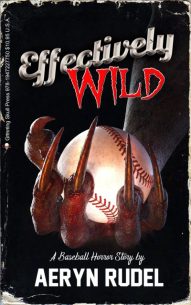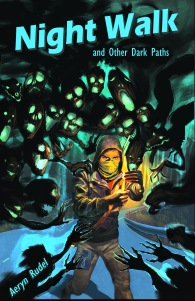Rejectomancy Rabbit Hole: Acceptance Rates

Recently, I was discussing the chances of getting published at some of the big genre markets with my author pals, and a few numbers were thrown around, some by yours truly. These numbers were mostly guess-work. None of us really know the exact percentage chance we’ll make it out of the slush pile and onto the editor’s desk, to say nothing of our chances of actually getting published. Then I remembered a few markets had actually told me how close I’d gotten to publication in their rejections, relating my near miss in terms of percentages. So let’s take a look at those rejections, use a little rejectomancy, and see what we can learn.
The first rejection is from Escape Pod, a fantastic sci-fi audio market.
[1] Thank you for sending [story title] to Escape Pod. Unfortunately, this story wasn’t a good fit for us. Choosing stories is a subjective process, and we have to reject many well-written stories. Please note that we do not accept revised stories, but we wish you the best in finding this one a good home, and we look forward to your next submission.
[2] Our Associate Editors enjoyed this story, and the Assistant Editors liked it enough to hold it for a second look, but ultimately the competition was too strong this month. About 5-7% of submissions reach this stage.
[3] This was a well-written story with a great setup, but we wanted the story to be set at a point when the narrator was still making decisions.
A nice little rejection that I’ve broken down into three sections. Let’s discuss each one.
[1] It’s not uncommon in close-but-no-cigar rejection to find the same boilerplate language you’d see in a form rejection. The reason for this is, I think, pretty simple. There’s certain information a publisher needs to relate to every author in every rejection, no matter how close the story actually gets to publication, and there’s no point in reinventing the wheel. That’s what we have here.
[2] Okay, now we’re getting to the good stuff. The editors relate some of how their selection process works. In addition to the info here, Benjamin C Kinney, a former assistant editor at Escape Pod, provided even more details on the selection process on his blog, here. What we’re looking at is three tiers of readers: associate editors, assistant editors, and then, finally, the co-editors (EICs?) of the publication. I don’t know if Escape Pod also employs first readers, but I assume so, as most markets this do. My story was rejected by the assistant editors, and as the rejection states, that’s roughly 5-7% of submissions. Not bad.
[3] As is common with this level of rejection, the editors provided a bit of specific feedback on my story. This is always exceedingly helpful. Even if you don’t end up using the feedback, it lets you know what the editors might want to see in a future story. So, when I submit another piece to Escape Pod, this piece of feedback will help me determine which story to send them.
Okay, the next rejection is from Flash Fiction Online, one of the premier markets for genre flash fiction.
[1] Thank you for considering Flash Fiction Online for your story, [story title]
Unfortunately we have decided not to accept it. As much as we wish we could, we can’t publish every good story that comes our way. Truthfully, we’re forced to return a great many stories with merits that make them well worthy of publication, including yours.
[2] Your story did, however, reach the final stage of our selection process–one among an elite group. Less than 5% of stories make it this far. That is no small feat.
[3] In winnowing, stories are discussed and vetted before I make my final selections. If you are interested in receiving feedback based on those discussions you are welcome to email me at [email]. Please use the following subject line: FEEDBACK REQUEST: [Story Title].
We wish you the best of luck finding a home for your story elsewhere, feel confident of your success in doing so, and hope to receive submissions from you in the future. May the muse be ever by your side.
Like the rejection from Escape Pod, I’ve broken this rejection down into three parts. Let’s discuss them.
[1] Again, we see the boiler plate language here that relates important information regardless of the tier of rejection. I really love that they talk about turning away good stories. Every market does. They have to. There just isn’t enough space to publish all the stories they like. What’s great, though, is that when you do make it this far with a market like FFO, it’s pretty much a guarantee you’ve got a sellable piece on your hands. I’ve gone on to sell all the pieces FFO rejected at this stage, and I was able to submit those stories with greater confidence after FFO turned them down.
[2] The nitty-gritty details. FFO, like many of the big genre markets, as a multi-tiered selection process. I’m somewhat familiar with it as I’ve made it to this final stage a number of times. I know it begins with a team of first readers that choose stories from the slush pile for further evaluation. Then there are a number of rounds where the staff votes on their favorite stories (three, I think). Finally, the editor makes a decision on which stories get published. As noted above, about 5% of submitted stories make it to the final round. Again, that’s pretty good.
[3] Flash Fiction Online offers a very useful service to authors who make it to this final stage of the winnowing process. You can email the editor, and they’ll provide you with curated feedback from the staff when they were voting on stories. I’ve taken that offer once and received an excellent mix of praise and constructive feedback. I can say without reservation that that feedback and the revisions I made because of it helped me sell the story on the next submission.
With the above information in mind, what are the chances of getting published by these two markets? Even knowing the exact percentage of stories that make it to these final evaluation stages, all I can do is speculate. Duotrope and The Submission Grinder give us one more clue, though – the acceptance rate for each market. That’s roughly 3.5% for Flash Fiction Online and 3.0% for Escape Pod. Now, rejections are always underreported at both Duotrope and The Submission Grinder, which can inflate acceptance rates. My best guess is that both markets are closer to a one or two percent acceptance rate.
Of course, the burning question is how many submissions do these markets receive during their submission windows? I don’t know for sure, but we can look at another pro genre market, Diabolical Plots, that provides exact submission numbers for their submission window and draw some ballpark conclusions. In their last submission window, Diabolical Plots reported 1,451 submissions received. I’d guess Escape Pod and Flash Fiction Online receive a similar amount of submissions (maybe more, maybe less). If I put on my rejectomancy hat, I can surmise that roughly 75 stories reach the stage my story did with each publisher. I can then even more crudely guess that of those 75, maybe 20 to 25 stories actually go on to publication. I have no way to determine the accuracy of that statement, but it feels about right.
So, yeah, we’re looking at some long odds, but I think we all knew that, right? That shouldn’t dissuade you from submitting to these markets, though, and you should avoid thinking about acceptance percentages like gambling odds. It’s not really random. The right story has a 100% chance of getting published, and the more you write and submit to these markets, climbing up the rejection ranks and getting useful feedback, the closer you get to publication.
Well, I hope you enjoyed my little trip down the rejectomancy rabbit hole and that a look at my rejections provided you with some useful information. Thoughts on rejection percentages at these markets or others? I’d love to hear it in the comments.






“Never tell me the odds!” — Han Solo …Not to knock old Han, but I’m glad you’re sharing “the odds” with all of us. Thank you!!
Well, I’d say that your odds of getting published at one of these big markets is slightly better than the odds of successfully navigating an asteroid field. Slightly. 😉
Ha! Ha! Good one!!
Pingback: Reblog: Acceptance Rates — Aeryn Rudel – Words Deferred